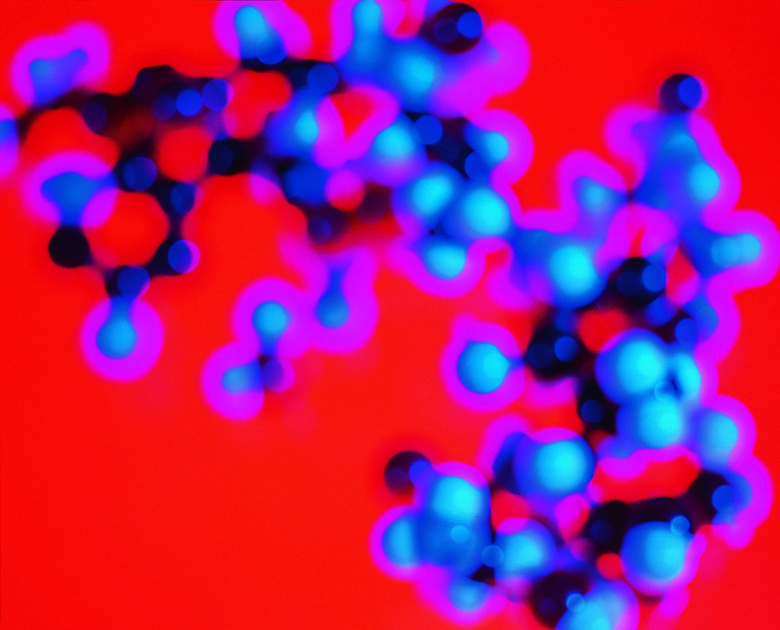List And Describe The Four Major Classes Of Molecules
Atoms are tiny, tiny building blocks. When you put two or more together, you get a molecule. That might not seem very big, either, but it's all relative. Some molecules are "macromolecules." Made up of thousands of atoms, they are comparatively large. The four major classes of molecules found in living things are giants in the microscopic world. Carbohydrates, proteins, lipids and nucleic acids each have different jobs that help keep organisms performing their life functions.
Get Up and Go
Get Up and Go
Organisms primarily use carbohydrates for energy, but sometimes use them for support as well. They are made up of various combinations of carbon, hydrogen and oxygen. Simple sugars, such as table sugar and glucose, which provide energy for most cells, are one type of carbohydrate. If many sugars are chained together, starches are formed. Because of their large size, starches serve as storage facilities for sugar. Some types of starches are firm and supportive. The starch cellulose is what gives plants rigidity and keeps them from flopping over.
Tough Stuff
Tough Stuff
Proteins are made up of amino acids. The specific combination of amino acids determines the type of protein. Twenty amino acids exist, and 10 of them can be made by the human body. Plants, on the other hand, can produce all 20. Proteins play many roles in organisms, including helping the immune system, helping cells communicate, speeding up chemical reactions and building tissue, such as muscle.
Slippery Slope
Slippery Slope
Lipids are mostly made up of carbon and hydrogen. Lipids that are fats and oils are primarily used to store energy for future use. Phospholipids play an important role in making cell membranes semi-permeable, so not everything can get in or out. Many lipids are "hydrophobic." This doesn't mean they're afraid of water; they just won't dissolve in it. This feature makes them useful as water barriers in cell membranes. Steroids, such as cholesterol, are lipids. Though too much cholesterol damages cells, it's needed to make animal cell membranes, and is vital to brain function.
Carrying the Code
Carrying the Code
Nucleic acid comes in two forms: ribonucleic acid, RNA, and deoxyribonucleic acid, of DNA. Composed of carbon, hydrogen, oxygen, phosphorus and nitrogen, they are vital to heredity. DNA stores an organism's genetic information, while RNA carries it to where it's needed. While DNA is highly recognizable in its double helix shape — like a twisted ladder — RNA is just a single chain. Some RNA molecules are ribozymes, which speed up the rate of chemical reactions in the body. With the exception of some mammals' red blood cells, the cells of all organisms contain DNA and RNA.
References
- North Seattle Community College: Lecture 4: Biological Molecules
- Indiana University Southeast: Organic Compounds
- University of Arizona: The Biology Project: The Chemistry of Amino Acids
- USDA: Choose My Plate: What Foods Are in the Protein Foods Group?
- University of Colorado, Boulder: Xue Lab: Phospholipids
- Oregon State: Food
Cite This Article
MLA
Sherwood, Susan. "List And Describe The Four Major Classes Of Molecules" sciencing.com, https://www.sciencing.com/list-describe-four-major-classes-molecules-10269/. 24 April 2017.
APA
Sherwood, Susan. (2017, April 24). List And Describe The Four Major Classes Of Molecules. sciencing.com. Retrieved from https://www.sciencing.com/list-describe-four-major-classes-molecules-10269/
Chicago
Sherwood, Susan. List And Describe The Four Major Classes Of Molecules last modified August 30, 2022. https://www.sciencing.com/list-describe-four-major-classes-molecules-10269/
